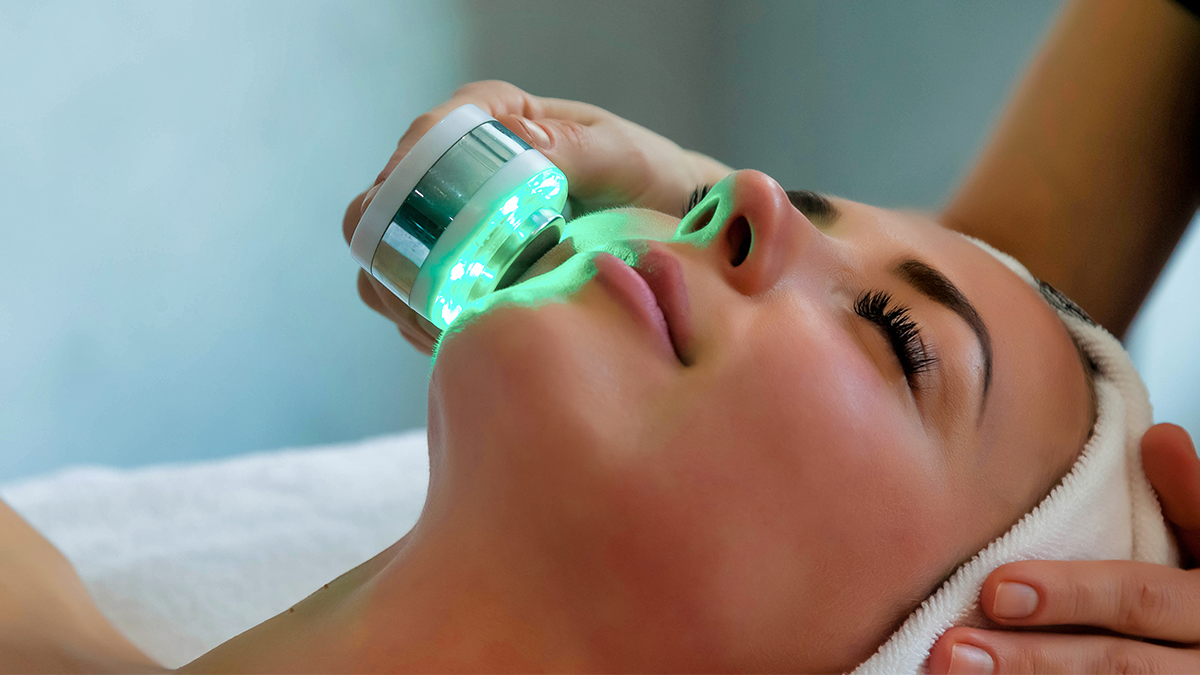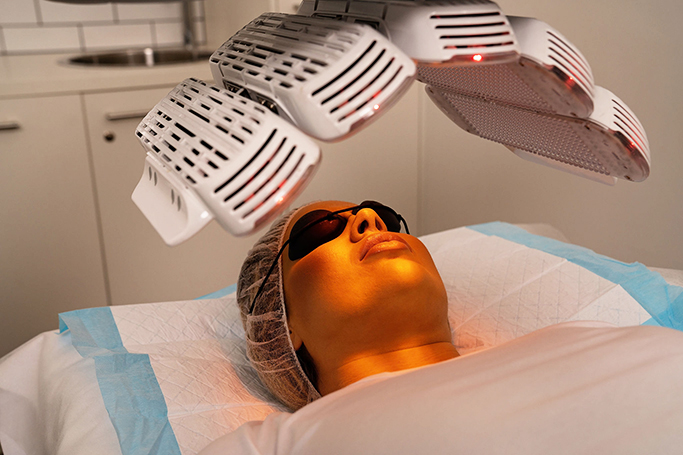The Science Behind Photobiomodulation: Illuminating Therapeutic Pathways
Wiki Article
Opening the Possible of Photobiomodulation: A Promising Method for Healing Intervention
Are you curious concerning the potential of photobiomodulation for therapeutic treatment? By targeting details mobile procedures, photobiomodulation has actually revealed prospective in accelerating injury recovery, reducing discomfort, and promoting cells regrowth. In this introduction, we will certainly explore the devices of action, applications in medication, and the current proof supporting the effectiveness of photobiomodulation.Understanding Photobiomodulation
To understand photobiomodulation, you require to comprehend the principle of exactly how light therapy can directly influence cellular procedures in your body. Photobiomodulation, additionally called low-level light treatment, is a non-invasive therapy that utilizes specific wavelengths of light to promote biochemical reactions in your cells. When revealed to these light wavelengths, your cells absorb the energy and convert it into cellular energy, known as adenosine triphosphate (ATP) This boost in ATP production brings about a cascade of mobile responses, consisting of enhanced metabolism, boosted flow, and raised manufacturing of collagen and other proteins.The therapeutic results of photobiomodulation are significant and have actually been studied thoroughly in different clinical areas. It has actually shown encouraging cause promoting tissue repair service and regrowth, lowering swelling, relieving pain, and boosting injury recovery. Moreover, photobiomodulation has actually been located to have a positive effect on neurological conditions, such as traumatic brain injury and stroke, by boosting neural task and promoting neuroplasticity.
Unlike various other therapies, photobiomodulation does not create or create any type of warmth tissue damage. It is essential to note that photobiomodulation ought to be provided by trained specialists or according to the maker's guidelines to guarantee optimal results and safety.

Systems of Activity
In comprehending the systems of activity, you will certainly find just how photobiomodulation straight influences cellular procedures with particular biochemical responses. When light is put on the body, it is soaked up by chromophores, such as cytochrome c oxidase and flavins, which exist in the mitochondria. This absorption leads to a waterfall of occasions that ultimately cause mobile changes.One of the crucial systems of activity is the stimulation of ATP production. Photobiomodulation raises the activity of cytochrome c oxidase, a vital enzyme in the mitochondria that is involved in the electron transport chain. This boosted activity leads to the manufacturing of even more ATP, the major energy currency of the cell. Consequently, cellular metabolic rate is boosted, promoting tissue repair service and regeneration.
Additionally, photobiomodulation has been shown to regulate cellular signaling paths. It activates numerous development variables and signifying molecules, such as nitric oxide and reactive oxygen varieties, which play vital functions in processes like angiogenesis, swelling, and cell proliferation. These signaling pathways contribute to the therapeutic effects of photobiomodulation, promoting cells healing and reducing discomfort and inflammation.
Applications in Medicine
Check out the considerable applications of photobiomodulation in medication. Photobiomodulation, also called low-level light therapy, is a non-invasive therapy that utilizes light to promote mobile procedures and promote recovery. In medication, this method has actually shown promising results throughout various areas.One of the primary applications of photobiomodulation is in discomfort administration. pbm light therapy. It has actually been utilized to reduce both intense and persistent discomfort, including musculoskeletal conditions, neuropathic pain, and post-operative discomfort. By targeting the affected area with details wavelengths of light, photobiomodulation can reduce inflammation, promote tissue repair, and provide relief
In addition, photobiomodulation has actually revealed prospective in wound healing. It can accelerate the healing procedure by enhancing cell spreading, advertising angiogenesis, and minimizing mark cells formation. This has significant ramifications in the therapy of persistent wounds, such as diabetic person ulcers and pressure sores.
In dermatology, photobiomodulation has been used for its anti-inflammatory and regenerative effects. It can boost the look of marks, reduce acne lesions, and promote hair growth in conditions like androgenetic alopecia.
Moreover, photobiomodulation has shown assurance in neurorehabilitation. It can improve cognitive feature, improve electric motor recuperation, and aid in the therapy of neurodegenerative illness like Alzheimer's and Parkinson's.
Medical Proof and Study Searchings For

In the area of bone and joint conditions, photobiomodulation has actually been discovered to browse around this site lower pain and click inflammation, enhance variety of activity, and accelerate cells repair. Studies have actually shown its effectiveness in dealing with problems such as osteoarthritis, tendinopathies, and muscle stress. Furthermore, photobiomodulation has actually revealed positive impacts on injury healing by advertising collagen angiogenesis, synthesis, and fibroblast proliferation. This makes it a valuable tool in the administration of chronic injuries, diabetic person abscess, and surgical cuts.
Moreover, research has actually shown that photobiomodulation can have neuroprotective and neuroregenerative results. It has been discovered to improve cognitive feature, lower neuroinflammation, and boost neuronal survival and synaptic plasticity. This has crucial ramifications for the treatment of neurological problems such as Alzheimer's illness, Parkinson's illness, and stroke.
Future Directions and Prospective Challenges
Relocating ahead, it is essential to consider the future directions and possible challenges bordering the usage of photobiomodulation as a restorative treatment. Currently, there is no agreement on the optimal wavelength, intensity, duration, and regularity of photobiomodulation therapy.An additional important future instructions is the advancement of affordable and mobile photobiomodulation tools. While existing devices are efficient, they are commonly bulky, expensive, and need professional guidance - pbm light therapy. The development of affordable and easy to use devices would greatly enhance accessibility to this treatment, allowing even more people to profit from its possible restorative impacts
Additionally, future study needs to concentrate on illuminating the systems underlying photobiomodulation. Regardless of its expanding popularity, the precise devices whereby photobiomodulation applies its therapeutic impacts are not fully recognized. Recognizing these devices would certainly not only improve our knowledge of the treatment but additionally help in the advancement of even more targeted and effective interventions.
Nonetheless, there are likewise prospective challenges that require to be addressed. pbm light therapy. These consist of the demand for standardized methods, the need for properly designed scientific trials with bigger sample dimensions, and the need for long-lasting follow-up studies. In addition, regulatory and safety and security considerations have to be taken into consideration to make sure the risk-free and effective use helpful hints of photobiomodulation in professional practice.
Conclusion
In verdict, photobiomodulation holds wonderful pledge as a healing treatment in medicine. With continuous studies and innovations in this field, photobiomodulation has the possible to open new opportunities for enhancing client end results.Are you interested concerning the capacity of photobiomodulation for restorative treatment? By targeting certain cellular processes, photobiomodulation has actually shown prospective in increasing injury healing, lowering discomfort, and advertising cells regeneration.In addition, photobiomodulation has actually shown potential in injury recovery.Moving forward, it is important to think about the future directions and possible challenges bordering the usage of photobiomodulation as a therapeutic treatment. With ongoing research studies and improvements in this area, photobiomodulation has the possible to open new possibilities for boosting individual outcomes.
Report this wiki page